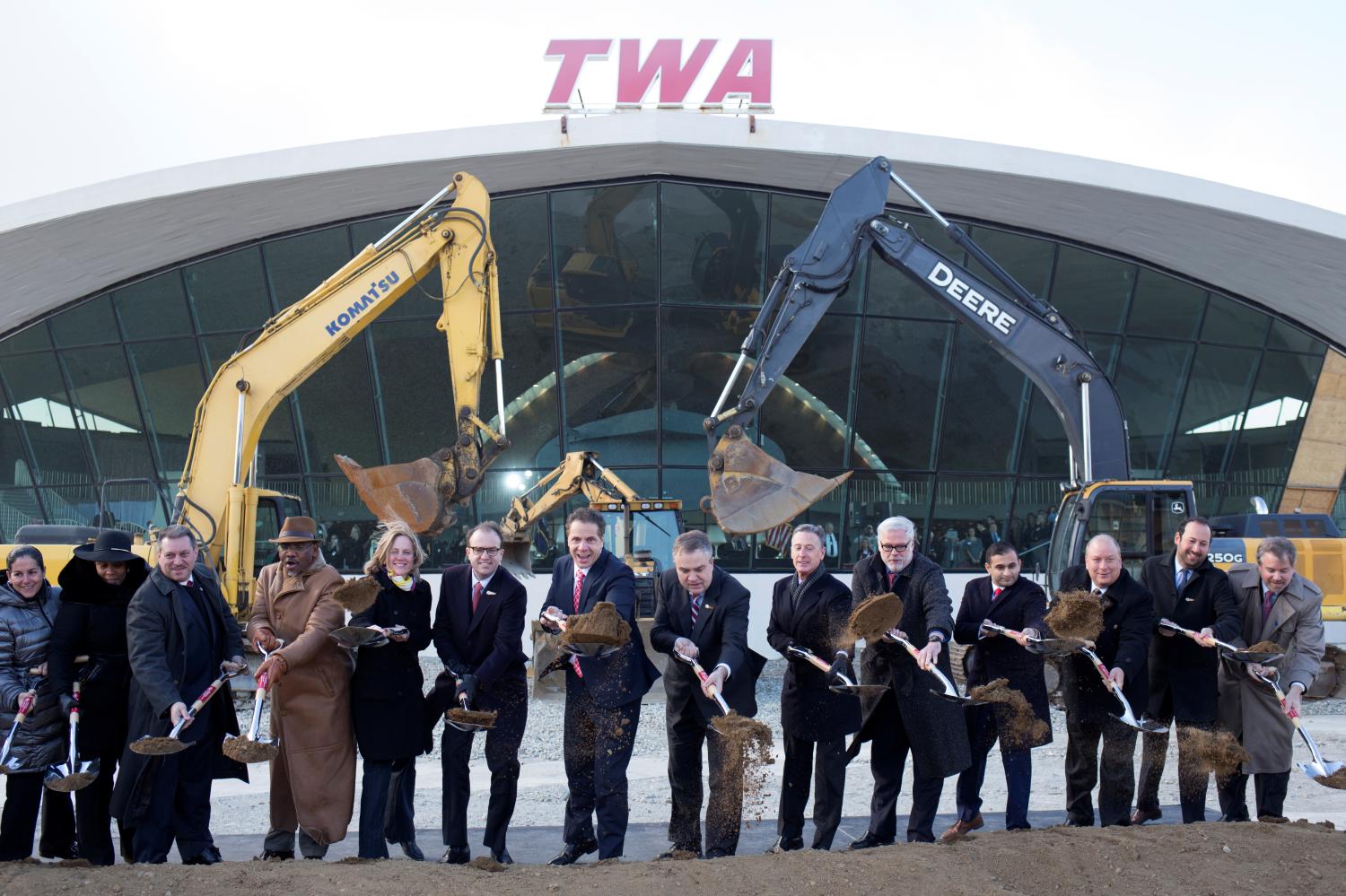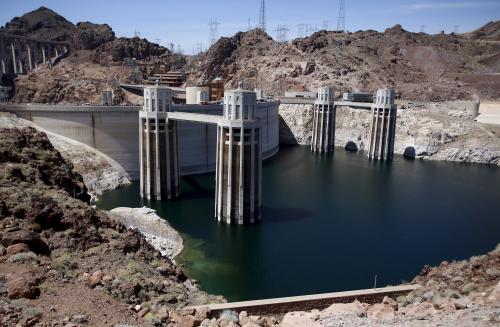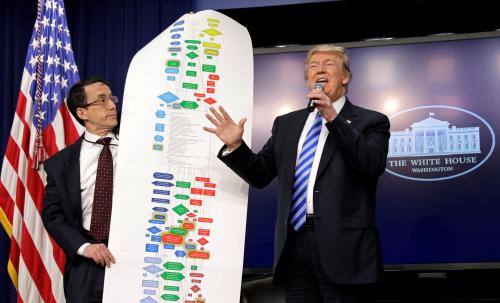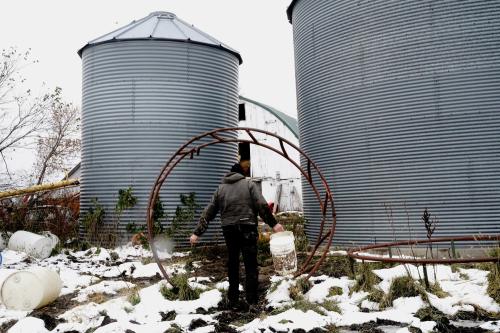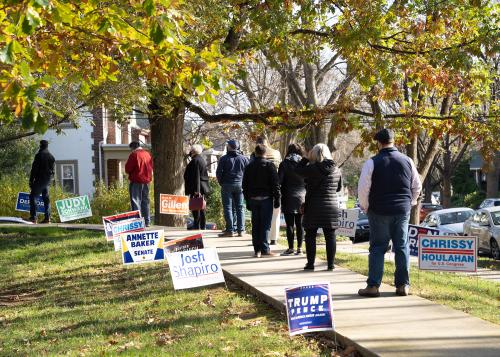States play a central role in overseeing America’s infrastructure. They own roadways and many other transportation assets. They regulate a wide assortment of transportation, water, energy, and telecommunications systems. They manage billions in federal infrastructure funds and are increasingly looking to jumpstart new investments, while also choosing how and where to support local infrastructure efforts.
That’s what makes 2018 such an important year. With 36 governor mansions up for grabs, a slew of new or incumbent executives will have four years to set their states’ infrastructure agendas. Issues such as roadway design, environmental resilience, and overall funding levels will all run through the offices of these new governors.
But these infrastructure conversations and activities do not simply start after November 6. In many states, they have been a central feature of debates throughout a heated campaign season.
To get a better handle on where future governors stand on infrastructure, we judged whether all final Democratic, Republican, and Independent candidates developed infrastructure plans, how detailed those plans were, whether candidates stumped for their ideas, and how the press covered them. We used data from campaign websites and major press outlets to create an original index ranking states based on the depth and breadth of infrastructure issues covered (the entire methodology and results are available for download here). Based on that review, we categorized each candidate in the following ways:
- Did the candidate make at least a brief mention of infrastructure (i.e. “invest in our roads, bridges, and airports”)?
- Did the candidate make a detailed mention of infrastructure challenges or their policy positions, including separate discussions of transportation, water, broadband, and energy policy?
- Did the candidate release actionable infrastructure plans, including proposed budget figures?
Based on these results, we found that infrastructure is playing a role in nearly every gubernatorial election. However, this doesn’t mean the playing field is even. In particular, Democrats appear poised to advance specific proposals and look beyond transportation issues. If a “blue wave” does in fact reach governors mansions, it could project a more forceful and expansive approach to statewide infrastructure over the coming four years.
Most candidates are discussing infrastructure, but Democrats tend to have more specific proposals
Considering how much the public supports greater investment in infrastructure, it’s no wonder that most gubernatorial candidates choose to focus at least some of their time on infrastructure topics. Of the 73 major candidates running for governor, 64 mention infrastructure policy in some capacity.
Of course, there’s a big difference between simply saying “I want to fix roads” and actually developing and releasing detailed proposals for potential voters to consider. Among the 64 gubernatorial candidates who manage to talk about infrastructure policy, 41 offer detailed language on their infrastructure views, but only 18 released more actionable plans. Of those, only 10 candidates put dollar figures to match their proposed concepts, totaling roughly $25 billion.
While the level of specificity concerning infrastructure varies widely from candidate to candidate and state to state, Democrats tend to use more detailed language overall. For example, Democrats make up 26 of the 41 candidates who use detailed language. Put another way, of the 36 Democrats currently running for governor, 26 use detailed language when they discuss infrastructure, nine briefly mention infrastructure, and only one fails to mention infrastructure at all. Compare this to their 36 Republican peers; only 15 are detailed when they discuss infrastructure, 14 briefly mention infrastructure, and 7 fail to mention infrastructure at all.

Partisan commitment to infrastructure issues also varies quite a bit across states. In Maine, for instance, Janet Mills (D) has released a detailed economic plan highlighting transportation, put together an extensive broadband plan, and advanced an environmental plan outlining her energy and water quality proposals. However, Shawn Moody (R) has no mention of infrastructure issues on his website, and a press scan did not uncover any proposals or mentions. On the other hand, in Colorado, both Jared Polis (D) and Walker Stapleton (R) have both addressed infrastructure in great detail. Polis has released thorough proposals for transportation, energy, broadband, and water infrastructure. Likewise, Stapleton has outlined detailed views on transportation, energy, and water.
Both parties’ candidates tend to discuss transportation issues, but Democrats are more likely to focus on water, broadband, and energy issues
Roads, bridges, ports, and other transportation facilities often represent the most visible infrastructure challenges facing the country, so it is not surprising that they attract the most attention at a state level too. In total, 50 of the 73 gubernatorial candidates discuss transportation, and there is a fairly even spread among the different parties, including 26 Democrats, 23 Republicans, and one Independent. Notably, candidates in some of the most populated states such as California and New York are emphasizing transportation needs. In the latter, the New York City subway has emerged as a central issue, with both Andrew Cuomo (D) and Marc Molinaro (R) outlining plans to fix the aging system, pledging additional investments and other needed repairs.
In other major infrastructure sectors—water, broadband, and energy—Democrats appear to be far more engaged than their Republican counterparts. Effectively double the number of Democrats (22) discuss at least one of these sectors compared to Republicans (12). Some members of both parties, however, cover all four sectors, making their infrastructure platform a central component of their statewide campaigns. These range from Gavin Newsom (D-Calif.) and Stacey Abrams (D-Ga.) to Charlie Baker (R-Mass.) and Bill Schuette (R-Mich.).

Certain states are showing far more interest in infrastructure, demonstrated by the overall depth and breadth of candidates’ proposals put forward
Even with significant differences between Democrats and Republicans, certain states and their voters are seeing their gubernatorial candidates express more widespread interest in infrastructure. Using the combination of issue “breadth” and “depth” among each state’s final gubernatorial candidates, we aimed to create a new combined “infrastructure campaign index.” This index ranges from 1.5 (little to no infrastructure interest) to 6 (high infrastructure interest) to consistently compare different states. Additional details on this index are available in the downloadable appendix.
The states with the highest indexes include Michigan, Colorado, and New Mexico—each scoring a 6—followed by states such as California, Georgia, and Massachusetts—each scoring a 5.5. This means that all the candidates across these states tended to cover a broad range of infrastructure issues and were also in-depth in their proposals. In Michigan, for instance, both Bill Schuette (R) and Gretchen Whitmer (D) have addressed water issues in great detail in their plans, a natural response to pressing issues in places like Flint and Detroit. Whitmer has also released a detailed infrastructure plan and funding proposal for addressing transportation and broadband, while Schuette has included language on broadband and transportation funding in his platform.

Many states, however, are somewhere in the middle; while a few of their gubernatorial candidates offer broad, detailed infrastructure proposals, others do not. States in this range include Iowa (3) and Texas (3.5) as well as South Carolina (4) and Ohio (4.5). For example, in Texas, Greg Abbott (R) provides detailed proposals on transportation funding and broadband infrastructure on his website, but Lupe Valdez (D) only briefly mentions wind energy on her website. And in Ohio, Richard Cordray (D) has released a detailed infrastructure plan addressing roads, public transit, water storage, broadband, and energy, while Mike DeWine (R) only has a brief mention of broadband on his campaign website.
The lowest-ranking states include Nevada, Arizona, Oklahoma, Idaho, and Arkansas, all of which scored a 2 or below. Across these states, all types of candidates—Democrat and Republican—have tended to provide little to no substantive infrastructure plans. In Nevada, Steve Sisolak (D) has no mention of infrastructure on his campaign website, and Adam Laxalt’s (R) website materials only briefly mention water and energy infrastructure. Meanwhile, in Idaho, both major party candidates only offer brief mentions of broadband infrastructure on their websites.
Setting the stage for infrastructure action
This analysis finds widespread interest in infrastructure as a priority area for states in the coming four years. Most gubernatorial candidates make at least passing mention of the issue—typically around transportation—and roughly half of all candidates have been willing to advance detailed proposals. In certain states, such as Michigan, Colorado, and California, there is a clear debate happening around infrastructure on the campaign trail.
But this analysis also confirms election results will matter. Certain candidates, often Democrats, will enter office with more developed infrastructure concepts, which could help translate their ideas into formal legislative proposals and immediate executive actions. If voters are truly committed to issues like improving the condition of roads and bridges, providing clean drinking water, and expanding the reach and affordability of broadband, their choices on November 6 could set the stage for significant reforms in the years to come.
Thank you to Romic Aevaz for research assistance on this post.


